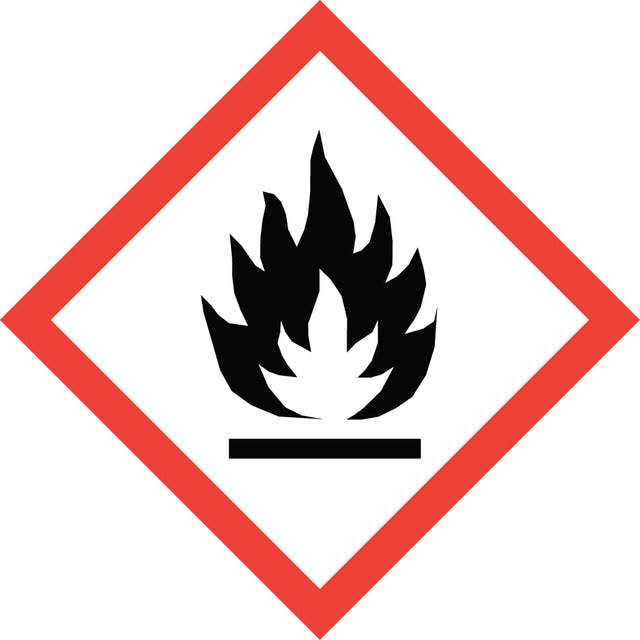Select a Size
About This Item
grade
ACS reagent
vapor density
3.7 (vs air)
vapor pressure
18 mmHg ( 37.7 °C)
Assay
≥98.5% xylenes + ethylbenzene basis
form
liquid
autoignition temp.
867 °F
composition
C6H5CH2CH3, ≤25%
expl. lim.
7 %
dilution
(for analytical testing)
impurities
H2SO4, passes test (substances darkened by sulfuric acid)
≤0.003% S compounds
≤0.05% water
evapn. residue
≤0.002%
color
APHA: ≤10
refractive index
n20/D 1.497 (lit.)
bp
137-140 °C (lit.)
mp
-34 °C (lit.)
density
0.86 g/mL at 25 °C (lit.)
SMILES string
Cc1ccc(C)cc1.Cc2cccc(C)c2.Cc3ccccc3C
InChI
1S/3C8H10/c1-7-3-5-8(2)6-4-7;1-7-4-3-5-8(2)6-7;1-7-5-3-4-6-8(7)2/h3*3-6H,1-2H3
InChI key
MVZVDAGWAAZJPE-UHFFFAOYSA-N
Looking for similar products? Visit Product Comparison Guide
Other Notes
All -D packages are 100% the same product, same quality, same specification as the package sizes previously sold without a -D.
Signal Word
Danger
Hazard Statements
Precautionary Statements
Hazard Classifications
Acute Tox. 4 Dermal - Acute Tox. 4 Inhalation - Aquatic Chronic 3 - Asp. Tox. 1 - Eye Irrit. 2 - Flam. Liq. 3 - Skin Irrit. 2 - STOT RE 2 - STOT RE 2 Inhalation - STOT SE 3
Target Organs
Central nervous system,Liver,Kidney, hearing organs, Respiratory system
Storage Class Code
3 - Flammable liquids
WGK
WGK 2
Flash Point(F)
77.0 °F - closed cup
Flash Point(C)
25 °C - closed cup
Regulatory Information
Choose from one of the most recent versions:
Already Own This Product?
Find documentation for the products that you have recently purchased in the Document Library.
Which document(s) contains shelf-life or expiration date information for a given product?
If available for a given product, the recommended re-test date or the expiration date can be found on the Certificate of Analysis.
How do I get lot-specific information or a Certificate of Analysis?
The lot specific COA document can be found by entering the lot number above under the "Documents" section.
How do I find price and availability?
There are several ways to find pricing and availability for our products. Once you log onto our website, you will find the price and availability displayed on the product detail page. You can contact any of our Customer Sales and Service offices to receive a quote. USA customers: 1-800-325-3010 or view local office numbers.
What is the Department of Transportation shipping information for this product?
Transportation information can be found in Section 14 of the product's (M)SDS.To access the shipping information for this material, use the link on the product detail page for the product.
What are the percentages of each Xylene isomer found in product 320579, Xylene?
According to data given by the supplier of product 320579, Xylenes, this product contains a minimum of 18.0% p-Xylene and no more than 20.0% Ethylbenzene (we allow for
My question is not addressed here, how can I contact Technical Service for assistance?
Ask a Scientist here.
Chromatograms
Our team of scientists has experience in all areas of research including Life Science, Material Science, Chemical Synthesis, Chromatography, Analytical and many others.
Contact Technical Service

